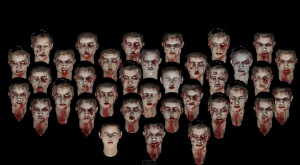IBM Brings HPC GPU to Cloud

Through its newly announced ability to offer Nvidia Tesla K80 dual-graphics processing unit (GPU) accelerators on bare metal cloud servers, IBM Cloud's SoftLayer infrastructure now enables organizations to use supercomputing clusters without increasing their current infrastructures.
The cloud infrastructure-as-a-service (IaaS) provider is targeting businesses of all sizes, from startups to international enterprises, across an array of verticals such as genomics, data analysis, machine learning, and deep learning, Jerry Gutierrez, global HPC sales lead, told Enterprise Technology.
Nvidia's Tesla K80 GPU board features up to 2.91 Tflops of performance with NVIDIA GPU Boost, 480 GB per second of memory bandwidth, and 24 GB of memory, according to Nvidia. Tesla was designed for high performance acceleration of scientific computation and data analytics, making it a good fit for customers involved in tasks such as big data, research, and machine learning, Gutierrez said.
Customers have been asking for HPC in the cloud, he said. After all, the overall HPC market is growing, expected to reach $44 billion by 2020, according to Market Research Media.
"We've seen over the last several years an uptick. It's now where HPC customers are wanting to move to the cloud, especially with GPU acceleration," said Gutierrez. "In general, the industry is getting more comfortable with [cloud]. The security is better. Some would say it's better than what they have in their own environments. Being able to offer bare metal servers, dedicated firewalls, let's us offer what they want."
One thing HPC customers want: Move the cost of high-performance computing from capex to opex, something they can accomplish by adopting cloud, Gutierrez said. But, like their peers in the non-HPC world, organizations are primarily interested in SoftLayer's newest offering for another reason, he added.
"It really comes down to flexibility," said Gutierrez. "You can always move in the cloud. It's more about that convenience without being locked in to any one environment. If they want to spin up a cluster and do jobs, then spin that down, that's where the real value comes in. With HPC that's even more valuable. That's a huge investment to have sitting around."
Customer Artomatix, which uses machine learning and big data to create art for movies and video games, made dramatic productivity gains when it implemented Nvidia's GPUs in the cloud, said Neal O'Gorman, Artomatix founder and CEO, in a statement.
"We leverage the latest NVIDIA GPUs by repurposing them to work as supercomputers on IBM Cloud, which makes it feasible to do in seconds what would otherwise take hours or even days to do on standard hardware," he said. "By automating the generation of art on the SoftLayer platform, Artomatix enables digital graphic artists to focus on being creative, in addition to reducing project times and costs."
Rather than duplicate background figures in a battle scene, Artomatix uses deep learning to create different but similar creatures, Gutierrez said. Otherwise, companies must repeatedly copy and paste a few creatures or spend money and time designing dissimilar monsters for crowds, he said. "To see it in action is pretty incredible. Essentially, it makes one animator do the job of a team of animators," said Gutierrez. "Before, what they would do, they would create 10 different creatures and mix them all up. In a battle scene, if you looked very closely, you would see there were copies of different creatures in a group. It's really fascinating that the system will create a set of new animations. Each one is completely different."
Related
Managing editor of Enterprise Technology. I've been covering tech and business for many years, for publications such as InformationWeek, Baseline Magazine, and Florida Today. A native Brit and longtime Yankees fan, I live with my husband, daughter, and two cats on the Space Coast in Florida.











